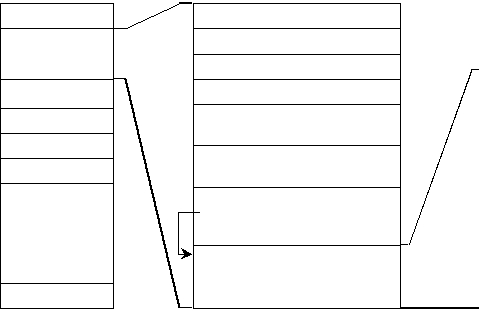JEITA CP-3451
- 12 -
4.5.5 Basic Structure of Thumbnail Data
Thumbnail data is recorded in the 1st IFD similarly to primary images, using two existing image formats.
No limit is placed on the size of thumbnail images. Thumbnails are not mandatory, but it is recommended that they
be recorded if possible, unless hardware or other restrictions preclude this.
Thumbnail data does not necessarily have to adopt the same data structure as that used for primary images. If,
however, the primary images are recorded as uncompressed RGB data or as uncompressed YCbCr data,
thumbnail images cannot be recorded as JPEG compressed data (see Table 2).
Table 2 Combinations of primary image and thumbnail data structures
Primary Image
Uncompressed
Compressed
Uncompressed
Possible
Possible
Thumbnail
Compressed
Not possible
Possible
When thumbnails are recorded in uncompressed format, they are to be recorded in the 1st IFD in conformance with
Baseline TIFF Rev. 6.0 RGB Full Color Images or TIFF Rev. 6.0 Extensions YCbCr Images.
An Exif-specific recording method is used to record compressed thumbnails.
In this case the Compression tag value is set to "6" and tags in the 1st IFD (JPEGInterchangeFormat,
JPEGInterchangeFormatLength) are used to designate the location and size. The images are recorded at the
designated location as a JPEG stream (from SOI to EOI) conforming to the JPEG Baseline DCT format. No APPn
marker, COM marker, nor restart marker is recorded in the JPEG stream (see Figure 7). To avoid duplicate
definitions, the 1st IFD is not used to record a tag indicating a TIFF image or information recorded elsewhere as a
JPEG marker segment.
Figure 7 Structure of Exif file with compressed thumbnail
SOI
APP1
DQT
DHT
SOF
SOS
Compressed Data
Exif Compressed File
APP1 Marker
Length
TIFF Header
0th IFD
Exif IFD
1st IFD
JPEGInterchangeFormat
JPEGInterchangeFormatLength
JPEG Thumbnail
Exif
APP1 Marker
EOI
SOI
DQT
DHT
SOF
SOS
Compressed Data
Compressed Thumbnail
EOI


